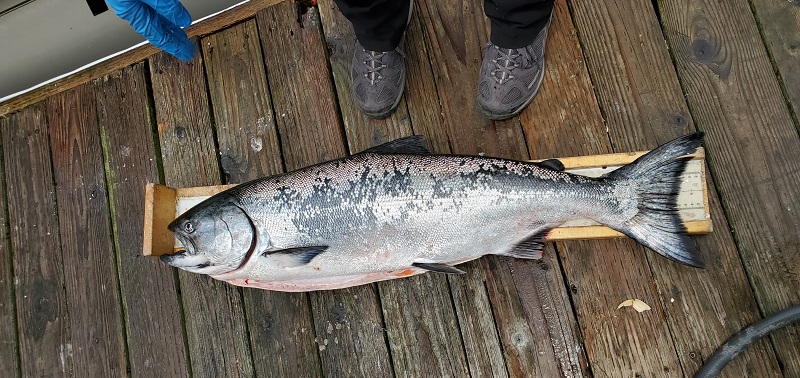‘First Flush’ Water Quality Monitoring Results Are In
The storm that swept through Nevada County between the 23rd and 25th of October dropped between seven and twelve inches of much needed precipitation. This rainfall has led to, among other things, increased flows in the Yuba River and SYRCL’s ‘first flush’ event.
We sat down with our resident hydrologist, Karl Ronning, to learn more about this ‘first flush’ event and to discuss the results of our water quality monitoring from the new eDNA test.

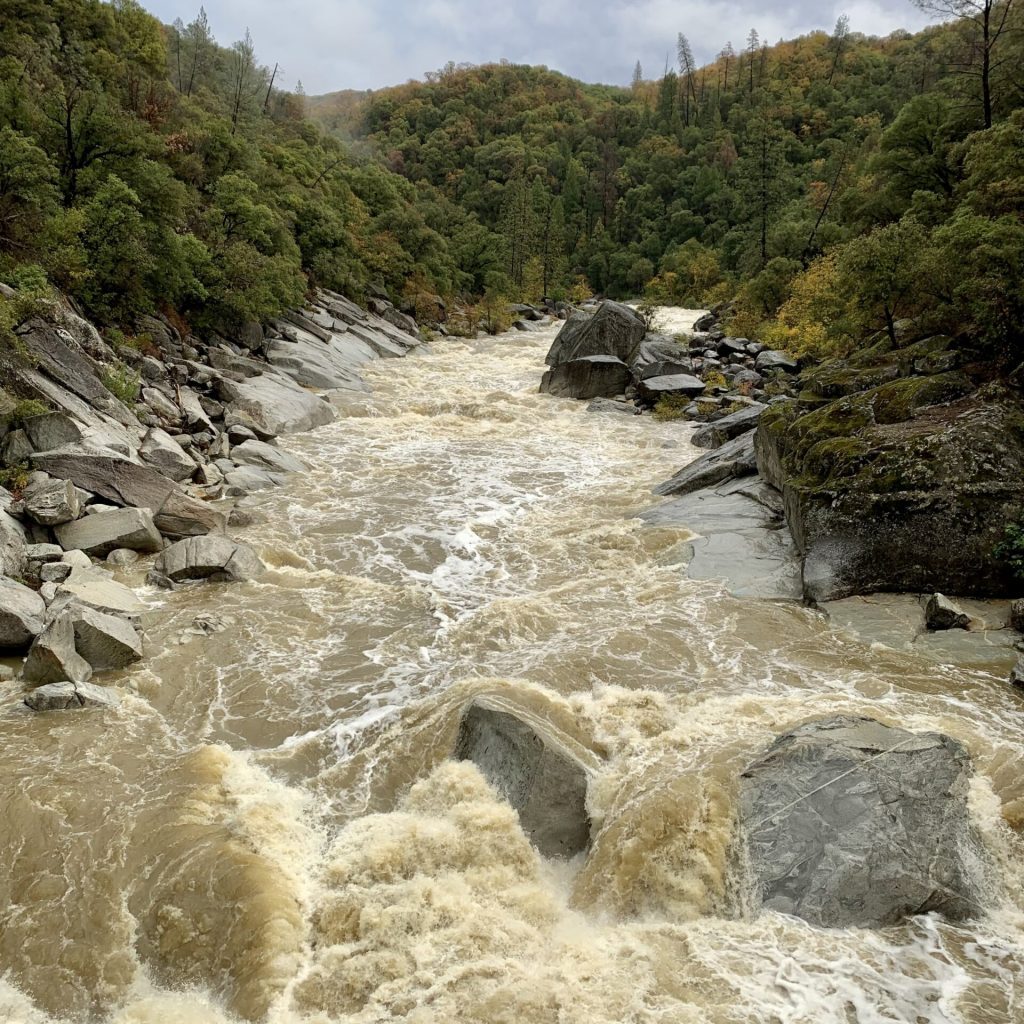
49 Bridge over the South Yuba River after the rainstorms in late October
Q: What is a ‘first flush’ event and why is it important to collect water quality data during them?
A: Where we live, a first flush event is the first large rainstorm of the Fall. Over the dry summer, dirt and dust, leaves, and pollen build up in the watershed – much of this is a natural part of the ecosystem. Other things that aren’t a natural part of the ecosystem like dog excrement, heavy metals from vehicle braking, and fire retardant also collect.
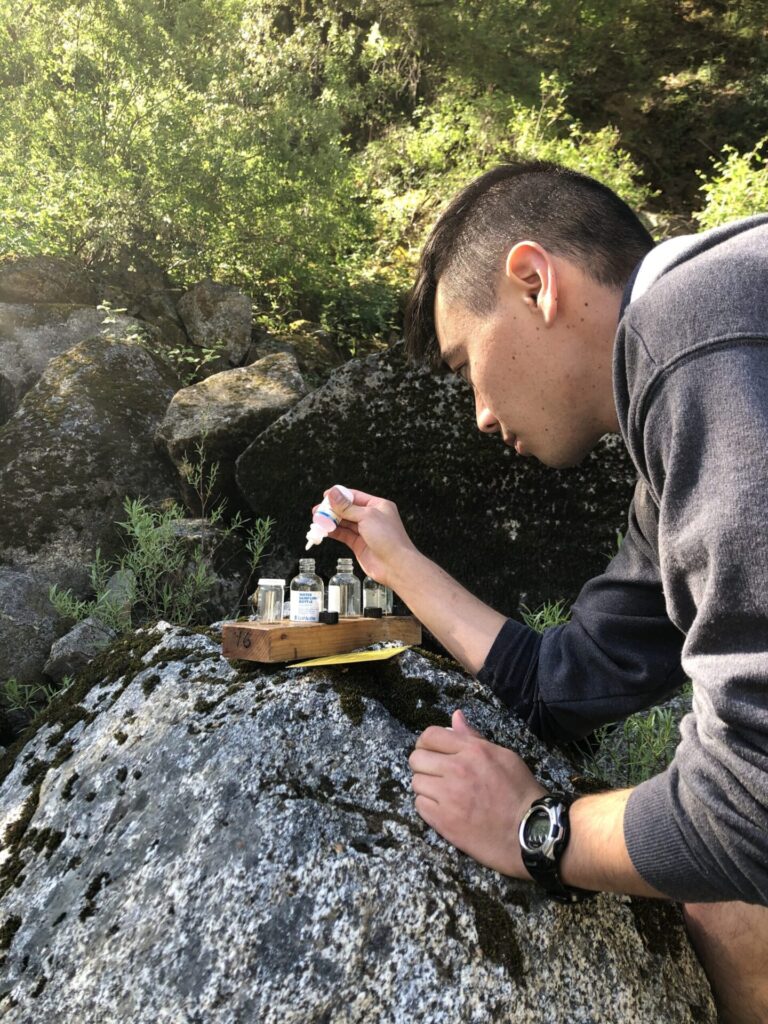
During first flush events all of this gets washed into our rivers and streams. Collecting water quality data during these events is important to help characterize what types of upstream pollutants exist in a watershed and the relative concentrations the pollutants exhibit.
What water quality data have you typically collected during first flush events?
During first flush events I’ve collected a variety of different data depending on what problem we are trying to assess. For example, in the past, we have collected data on mercury levels to assess legacy impacts of hydraulic gold mines and looked for fire retardant after the Jones Fire. Ever since the “plume” event of October 2019 (when we witnessed a large yellow plume emerge in the South Yuba near Edwards Crossing), we’ve been deeply interested in what causes the bacterial levels seen during first flush events.
What makes these results different from the regular bacteria testing you do? What do the eDNA kits you used this time tell us?
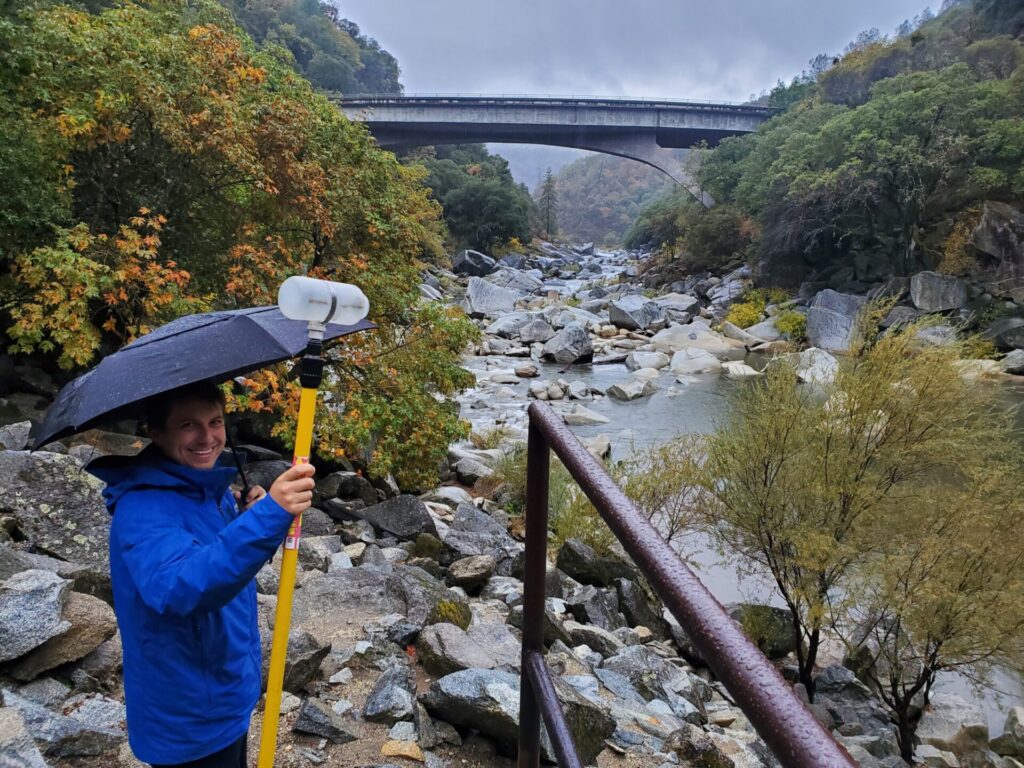
Since 2019, we have been testing for E. coli and coliforms to help determine relative concentrations of bacteria during first flush events. Typically, these bacterial concentrations decrease over the winter season as the watershed “flushes” out, but we’ve been left with the question of where this E. coli originates.
Is it canine? Human? Other species like bear and deer?
To help distinguish the potential sources of these elevated bacteria levels, we ordered eDNA test kits. These tests tell us what types of DNA are present in our watershed. These eDNA test kits detect the source by using quantitative PCR tests that allow us to look for specific DNA types and determine their relative presence in the watershed.
What do the results from the first flush event in October tell us about the water quality in the South Yuba? Should we be concerned?
We took two samples during the October 15-17, 2021 storm events, one at the beginning of the storms and one at the end. Our tests looked for DNA from cows, dogs, E. coli, humans, chickens, sheep, and pigs. We knew we were interested in E. coli, and had a suspicion that the sources could be dogs and humans – the rest of the animals are often found in human waste because we eat them.
The results indicated an overwhelming amount of human DNA as well as high readings of E. coli at the 49 Bridge over the South Yuba River. There are no set thresholds of DNA concentrations for a waterbody like this for E. coli, but if high E. coli exists during a storm event with high concentrations of human DNA, it is likely the high E. coli readings are due to humans.
E. coli readings are typically elevated during first flush events when the river runs high. During these times the typical river-goer is not recreating due to high water conditions (unless you’re a whitewater enthusiast) and would not be subjected to humans these E. coli levels.
What do you plan on sampling next?
Our next sampling will build on this eDNA dataset at the 49 Bridge and extend the samplings to other crossings upstream and downstream. This will help us isolate potential sources of the E. coli and potential problem tributaries contributing high amounts of E. coli to the river.
We also will be sampling other storm events besides ‘first flush’ events to see whether the DNA concentrations change over the course of the winter. Assuming we can secure funding, we would also like to begin sampling during the summer to determine how periods of heavy use compare to first flush events.
What can people do to mitigate their impact on water quality?
Continue to pick up after yourself and your pets when recreating at the river. In addition, if you have a septic system at your house, make sure it is properly maintained and you have no leaks within the system.
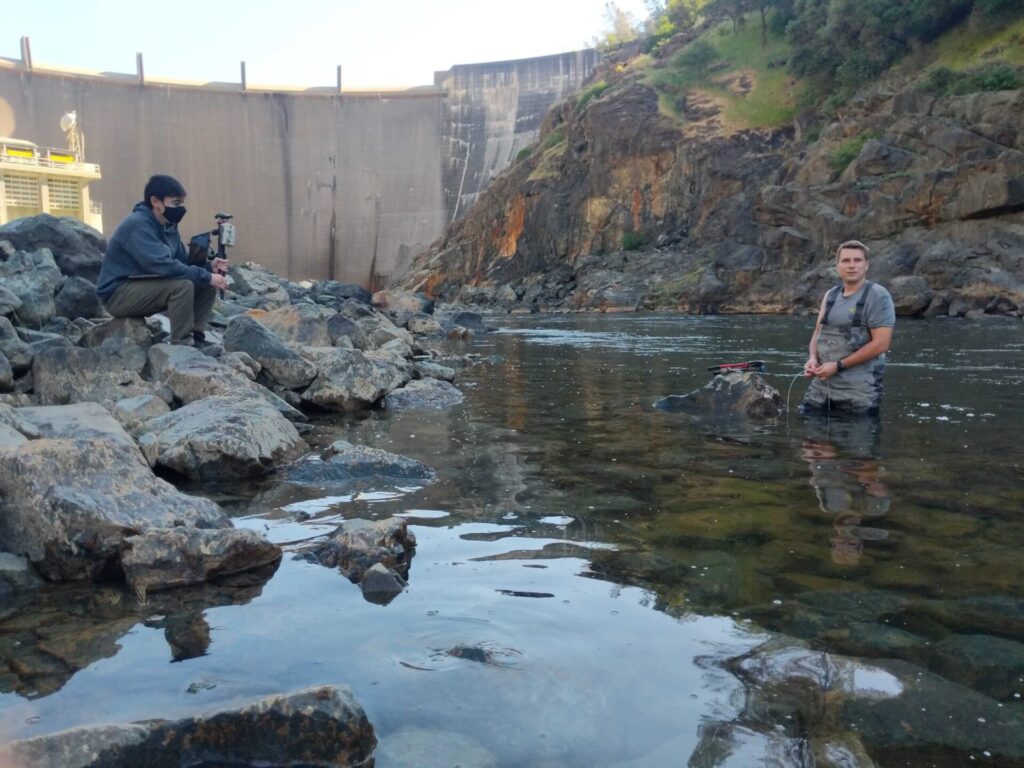
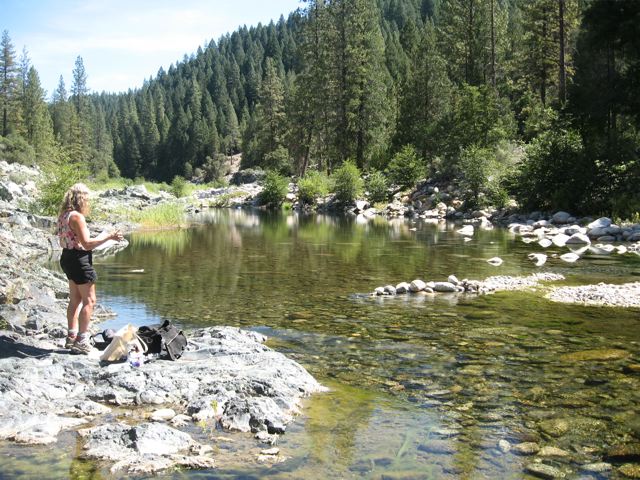
To learn more about the River Monitoring Program, please click here.
If you would like to support our efforts to protect and restore the Yuba watershed, your donation by December 31 will be matched. Please give to our Year-end Match Campaign now.
Did you enjoy this post?
Get new SYRCL articles delivered to your inbox by subscribing to our ENews.



